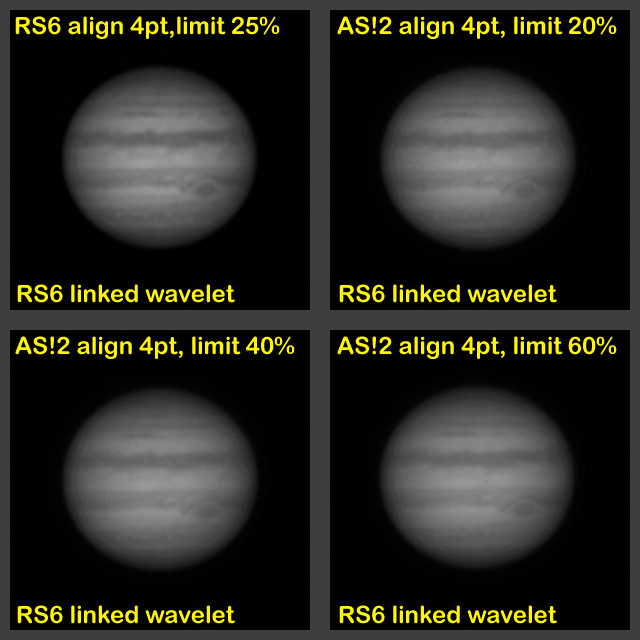Images taken with 5inch APO refractor or 12inch CDK
Recording with DMK41 or ZWO120MC. Processing in AstroStakkert!2, Registax 6 and Photoshop CS2.
(Update for 2015-03-09) I did an analysis about the color spot artifacts on Jupiter. They are caused by ASI120MC high speed mode picking up FPN (Fixed Pattern Noise) from the sensor chip. They can be calibrated out by using flats with the processing in AS!2. I also tried out darks but they don't give an additional improvement so the extra effort can be saved. The example dark shown below is level-stretched to show the FPN structure.
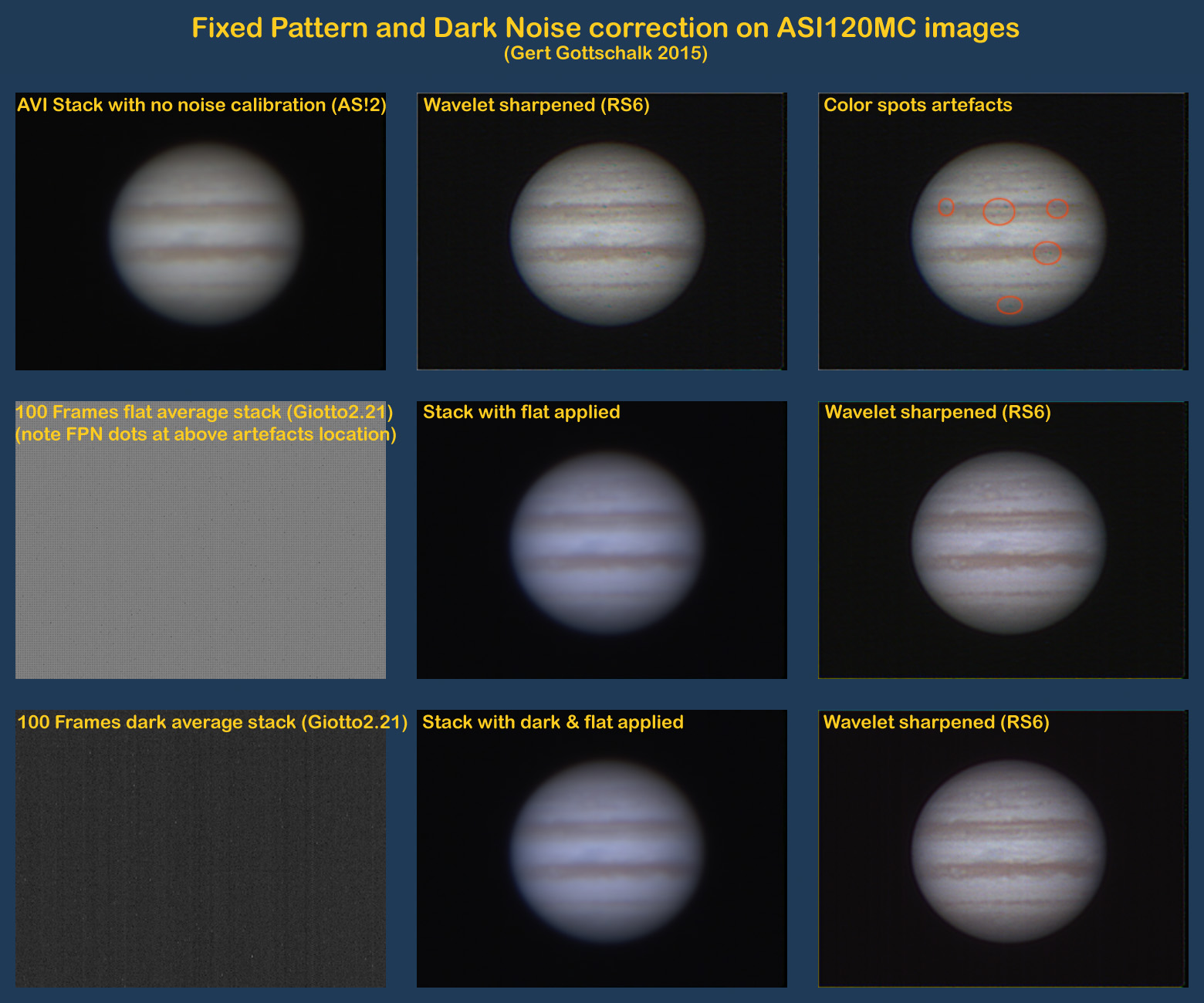
2015-03-27 03:08 to 05:06UT At first I thought that Calsky had made an error as it had predicted the visibility of the Red Spot. During the initial observation I did not see it. Only later in the images I saw that the spot was just disappearing behind the limb of the planet. There still was a second nice imaging opportunity with the transit of the moon Io and its shadow. Seeing was not good and I chose the 130mm refractor for imaging.
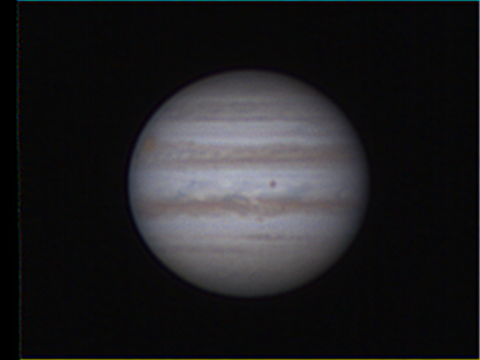 |
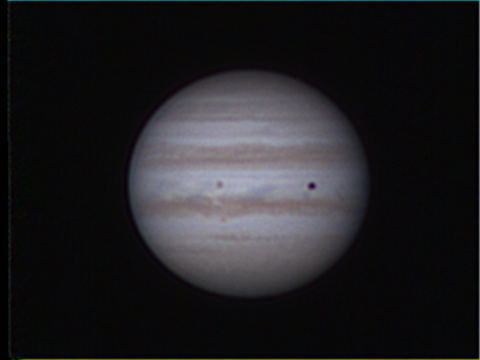 |
| 03:08UT The red Spot disappears at left and Io is right of the center. | 03:37UT Io is left of center and its shadow right of center. |
Altogether I took 56 AVIs and made a time lapse movie of the transit of Io. Just before the end of the shadow transit Jupiter disappeared behind the roof of the house.
2015-03-15 04:18UT Finally a transit of the Great Red Spot. The seeing was worse than usual and again the 130mm refractor was the only choice to reduce susceptibility to the turbulence.
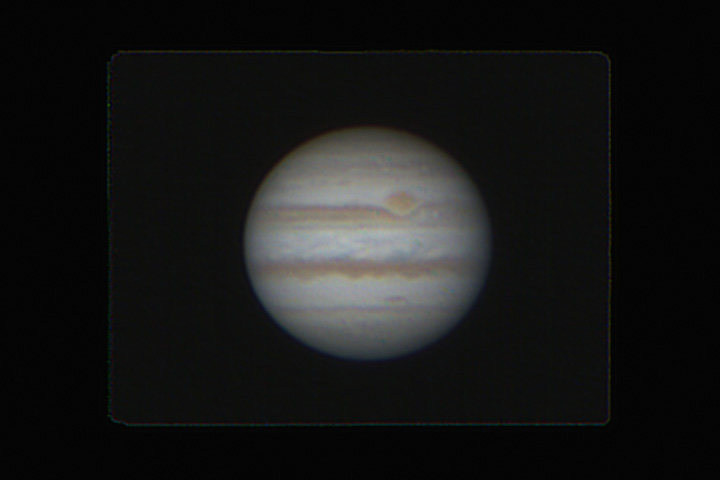
There was enough time to record 34 images which were put into an animated Video. Towards the end the seeing degrades.
2015-03-09 04:36UT Another evening of average seeing going back to the 130mm refractor. Performing testing on guiding with Firecapture 2.4 went well. Using different USB ports for the ASI camera and the mount interfacing USB to serial adapter works well.
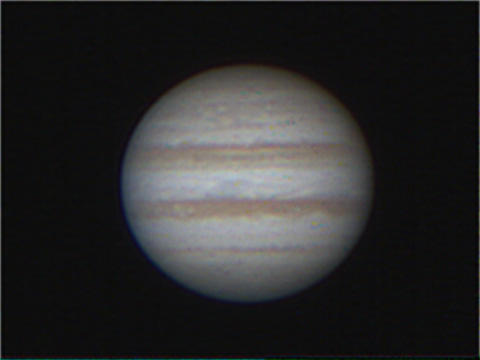
The sequence of images was combined into an animation video.
2015-03-07 20:42PST The CDK12 was used on a night with better seeing. Still the quality of the image is not as good as one would expect from the aperture. Still the large aperture seems to be very sensitive to seeing issues. It helps to have large numbers of frames.
Settings for the ASI120MC camera.:
ROI=640x480, FPS (avg.)=54, Shutter=5.026ms, Gain=80, Gamma=40, Brightness=8, WBlue=88, WRed=54, Frames captured=5000, AS2 frames used 30%
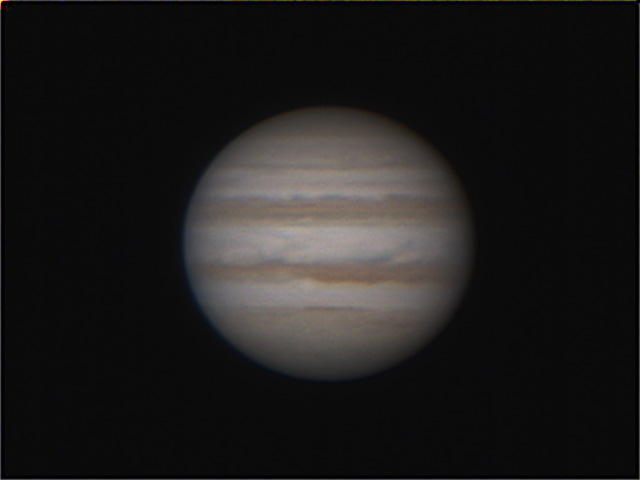
2015-03-06 05:35UT Using the 130mm refractor with 3x Barlow gave some surprisingly nice results and detail. Unfortunately the red spot was not visible.
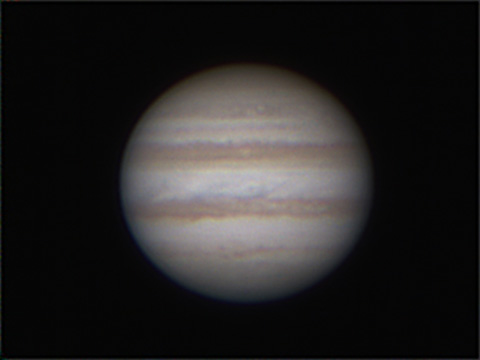
A series of images was used to make a little animation showing the rotation of Jupiter in less than 20min.
2015-02-25 06:25UT Seeing was better and the image composition was improved by the red spot and the transiting moon Europa and its shadow. Used 30% of about 2700 AVI frames recorded with Firecapture 2.3 on the 12inch F8 CDK with 2x barlow. Stacking with AstroStakkert!2 and wavelet sharpening in Registax6.
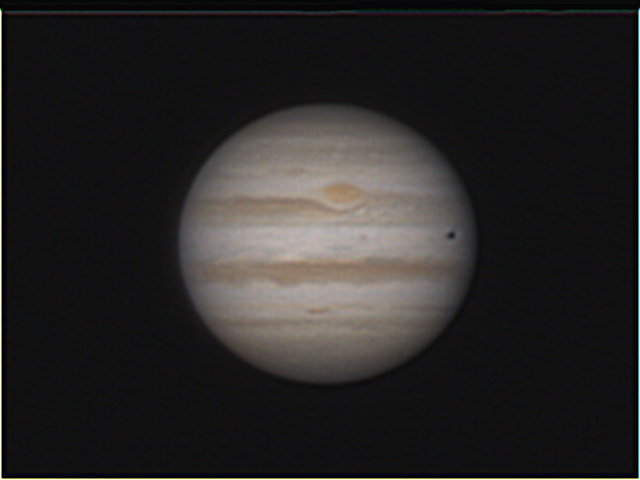
2015-02-25 06:25UT Covering about 50min in 26 individual AVI recordings the frames were combined into a time-lapse. For smoother viewing Jupiter is jogged forward and backward.
2015-02-21 06:15UT Seeing was only medium but this was the first light with the new ZWO120MC camera.
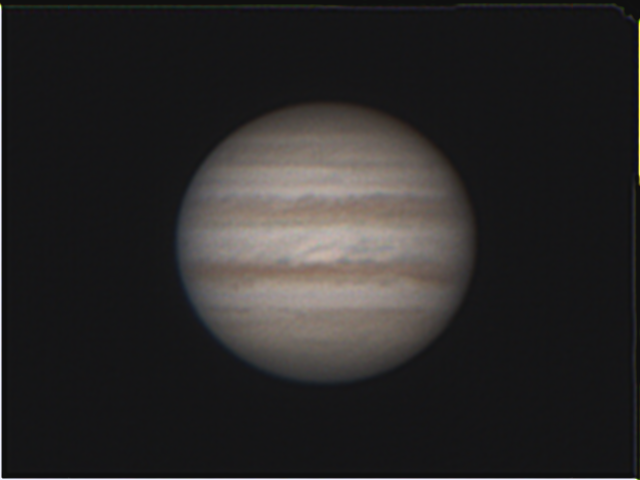
2015-02-01 A comparison of stacking in AstroStakkert!2 and Registax 6. Both stack were then sharpened in Registax.
